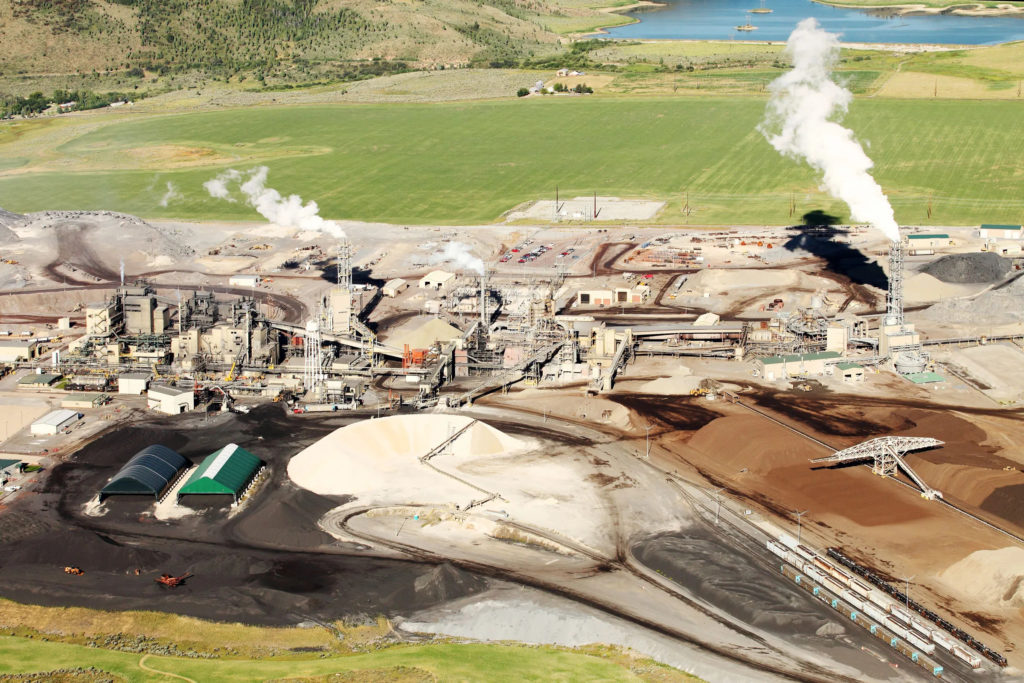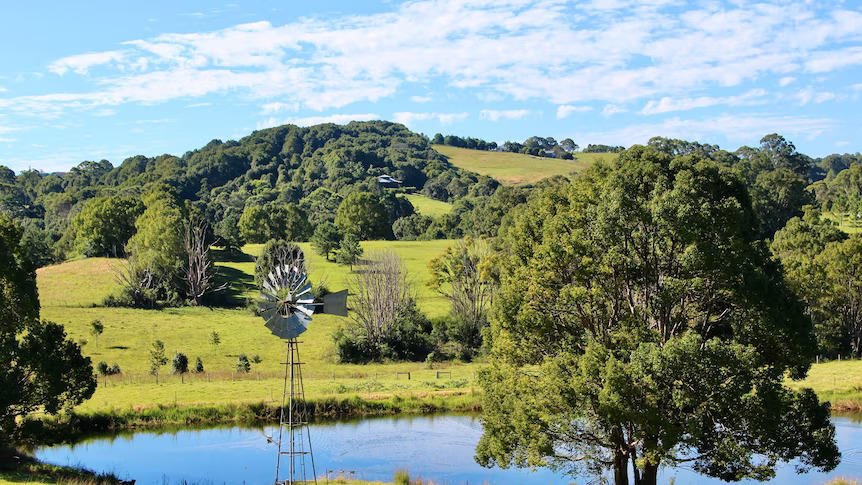Original publication by Max G. Levy for wired.com on 23 January 2023
Half of the globe’s crop productivity comes from a key fertilizer ingredient that’s non-renewable—and literally washing away.

DISRUPTING EARTH’S CHEMICAL cycles brings trouble. But planet-warming carbon dioxide isn’t the only element whose cycle we’ve turned wonky—we’ve got a phosphorus problem too. And it’s a big one, because we depend on this element to grow the world’s crops. “I don’t know if it would be possible to have a full world without any mineral phosphorus fertilizer,” says Joséphine Demay, a PhD student at INRAE, France’s National Research Institute for Agriculture, Food and the Environment.
Since the 1800s, agriculturalists have known that elemental phosphorus is a crucial fertilizer. Nations quickly began mining caches of “phosphate rock,” minerals rich in the element. By the middle of the 20th century, companies had industrialized chemical processes to turn it into a form suitable for supercharging crops, hardening them against disease and making them able to support more people and livestock. That approach worked remarkably well: The post-World War II “Green Revolution” fed countless people thanks to fertilizers and pesticides. But sometimes there’s too much of a good thing.
We have liberated Earth’s caches of phosphorus so rapidly that the element now pollutes freshwater ecosystems, where excesses cause harmful algal blooms, infiltrates the snowpack, and decreases levels of dissolved oxygen in lakes and rivers. Studies suggest that humanity has grown too dependent on it for feeding the planet—and we are running out of this nonrenewable resource, which comes from geologic deposits that take millenia to form. When it washes from soil into waterways, it essentially disappears forever. A looming “peak phosphorus” moment threatens to increase prices and foment political tension if demand eclipses supply, as a large majority of reserves exist only in one corner of North Africa.
In a paper published this month in Nature Geoscience, Demay broke down how much phosphorus 176 countries have used between the years 1950 and 2017, and she estimated how much the use of mineral fertilizer contributes to soil fertility in each nation. Remarkably, phosphate rock accounts for around 50 percent of the world’s soil productivity. “It has never been quantified like that,” Demay says. And those numbers matter, she says, because “the work really highlights the high gap that exists between different world regions.” Wealthy countries in Western Europe, North America, and Asia use far more of the world’s phosphate rock than Africa, despite African soils being relatively deficient in it. “There is a need to distribute more equally the remaining first rock reserves,” Demay says.
James Elser, an ecologist with Arizona State University and the University of Montana who studies the global phosphorus cycle, was taken aback by that 50 percent figure. “That we’ve been able to mobilize phosphorus from these ancient geological deposits, and spread it around the world enough so that half of soil phosphorus is now comprised of industrial anthropogenic fertilizer, is pretty stunning,” he says.
And if the remaining supply goes down, prices will go up, exacerbating the access gap between rich and poor countries, says Dana Cordell, an associate professor and research director of food systems sustainability at the University of Technology Sydney. In 2008, phosphate prices spiked 800 percent due to supply and demand issues, and again 400 percent last year, due to Covid-related disruptions. The new study “shows how our global food system has now become heavily dependent on mined, nonrenewable phosphate rock,” she says. “And even if there is phosphate rock in the ground, it might not be economically viable to access it.”
SCIENTISTS HAVE BEEN pointing out the “broken” phosphorus cycle for more than a decade: Humanity has unearthed huge quantities of the element, which winds up in waterways instead of returning to cropland.
The problem comes down to crap. People and livestock eat crops and excrete phosphorus as a result. (A University of Iowa researcher calculated that the state’s livestock produce a load of excrement equivalent to a nation of 168 million people.) But most of it won’t end up feeding plants again. Waste treatment can loop sludge or manure back to being fertilizer, but transporting and treating it is often impractical, so it may sit in stockpiles and “dry stacks” without the chance to boost another crop.
Or the system may be leaky: Sewage, septic tanks, stockpiles, and eroded soil drip phosphorus into oceans and rivers, where it dilutes to oblivion while degrading those ecosystems. For instance, phosphorus runoff drives the harmful algal blooms that have killed Florida’s seagrass, starving thousands of manatees.
Demay’s model determined that in a 67-year span, humans pumped almost a billion tons of nonrenewable phosphorus into food systems. Her team’s figures are derived from statistical data from the Food and Agriculture Organization of the United Nations. The global data, broken up by country, reported agricultural yields—like the amount of wheat grown, or headcounts of pigs and cows—from 1961 to 2017. (Data from 1950 to 1961 came from other data sets.)
Her team also broke down use trends. In 2017, Western European, North American, and Asian reliance climbed to nearly 60 percent of the total plant-ready phosphorus available in each region’s soil. Brazil, China, and India are quickly increasing their use, to 61, 74, and 67 percent respectively. The numbers for France and the Netherlands are no longer rising, because they’ve replaced some use of phosphate rock with manure; now they sit at roughly 70 and 50 percent. Yet in African countries like Zimbabwe, a lack of soil phosphorus limits crop yields. Demay’s estimates pin mineral fertilizer use in Zimbabwe to the 20 to 30 percent range, which is even lower than the 32 percent average for all of Africa.
To Elser, this illuminates a global inequity: Poorer countries access far less fertilizer, despite needing it more. And wealthy countries have been able to amass stockpiles from the rock reserves for decades, while countries that struggle with food security can’t afford to do the same.
This raises concerns over who will control the future of fertilizer. Nearly 75 percent of the world’s supply sits in the mines of Morocco and the Western Sahara. Economists get anxious when a commodity is consolidated in the hands of a few powerful people. (OPEC controls roughly the same fraction of the world’s oil, but with 13 member states.)
And it’s not entirely clear how long supplies will last. In 2009, Cordell estimated that a global “peak phosphorus” moment could happen as soon as 2030, which would leave 50 to 100 years of dwindling reserves. Today, she and Elser agree that the peak will likely come later, although it’s hard to predict when, because demand may skyrocket for other uses, like lithium iron phosphate batteries. Elser notes that new analyses now put the maximum supply at around 300 to 400 years.
To Cordell, it’s frustrating that this supply chain has been mismanaged. “If this was water—or another resource that we know humanity is dependent on—we would have so many measures in place to monitor those resources, to ensure more equitable and secure access,” she says. And if any other crucial resource was running out, she continues, “we would look for alternatives.”
She worries that phosphorus is “slipping through the institutional cracks.” But, she says, it’s not clear who is responsible for overseeing its supply—which government, or even which department. Agriculture? Environment? Health? Water? Trade? “It cuts across all of those sectors,” she says.
Demay hopes that her study will encourage more careful agricultural practices: combining cropland and livestock areas to more easily recycle phosphorus from manure, or planting trees or cover crops, like mustard or barley, that prevent soil erosion in a farm’s off-season—sparing waterways from fertilizer pollution. Better recycling programs might also help ween the world off phosphate rock. Right now, recycling mostly means using manure or sludge from wastewater systems on croplands, which is primarily for preventing water pollution rather than fertilizing plants. “It’s happening in such an inefficient, ineffective way,” Cordell says.
But other tech is growing in popularity. Urine diverting toilets can recapture the phosphorus in liquids. Adding magnesium to wastewater can create “struvite” crystals, an alternative fertilizer. Another method could make fertilizer pellets from dried manure sludge after anaerobic digestion (which also generates biogas fuel).
Biotech might lessen the need for fertilizer, says Elser—although these concepts are in earlier stages. Theoretically, biologists could breed or engineer crops to extract phosphorus more efficiently; researchers have already identified genes that boost phosphorus absorption. Lab-grown meat could cut demand for livestock and the cropland that supports them. And as a simpler solution, eating less meat could do the same. “The less meat we have to grow in the form of cows or pigs, the less feed we have to grow to feed them,” Elser says.
Elser takes inspiration from the progress the world has made in its transition to renewable energy—he thinks agriculture can become more sustainable too. With better phosphorus recycling throughout the food system, the world’s fertilizer could flow more easily to the places that need it. “Eventually, we’re going to have to get to a system that’s better than the one we have,” Elser says. “When that happens—I’m not sure.”




